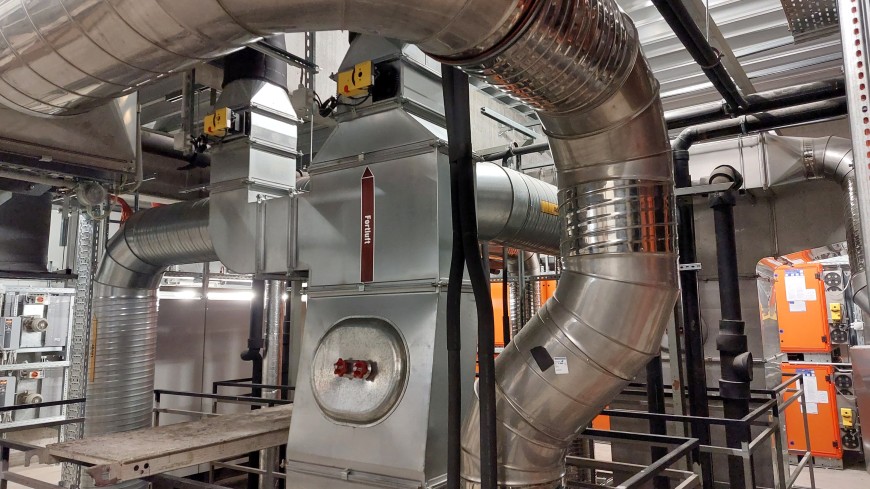Good practice: Saving energy with ventilation
How the Department of Chemistry contributes to a more sustainable and climate-friendly operation of laboratory buildings
2023/12/20 by Nico Bruns
Ventilation systems, which among other things supply the fume cupboards in laboratories with the necessary supply and exhaust air, are among the largest energy consumers in laboratory buildings. At the same time, they offer huge potential for saving energy if they are adjusted and controlled as required. In the Chemistry Department at TU Darmstadt, for example, around 115 megawatt hours of electricity or around 33,000 euros can be saved per year in building section D alone by lowering the temperature at night and improving the settings of the supply and exhaust air systems. The energy optimization of other parts of the building is already in progress.

The Unit of Technical Operations and Energy Management is working together with the Sustainable Laboratories Initiative of the Department of Chemistry under the leadership of Professor Nico Bruns and the users of the relevant parts of the building to optimize the energy efficiency of the ventilation systems in the Department of Chemistry. After extensive practical tests and an occupational safety risk assessment, the ventilation systems in building L2/04, part D, were optimized in terms of energy efficiency in June 2023. This part of the building houses laboratories of the Technical, Physical and Organic Chemistry and Biochemistry working groups.
No impact on work safety
The following measures were implemented: a night-time reduction of the ventilation systems from 8 p.m. to 8 a.m. and an adjustment of the system pressure during daytime operation. The changes to the system settings naturally have no impact on occupational safety and are accompanied by only minimal restrictions on the usability of the fume cupboards at night. In addition, the employees were informed about how to use the fume cupboards in the most energy-efficient way possible, in particular by consistently closing the fume cupboard panels (both horizontally and vertically) and avoiding manually setting the volume flow to the maximum.
These measures have demonstrably led to electricity savings of around 115 megawatt hours per year, which corresponds to the annual energy consumption of 38 single-family households. With the additional thermal energy savings in winter and the cooling energy savings in summer, the annual savings amount to around 33,000 euros at current energy prices. This represents an energy cost reduction of more than 30 percent for the ventilation systems. This is a good example of how adapted control of building technology – taking into account the working needs of employees and occupational safety – can lead to significant energy savings in laboratory buildings and thus also to more sustainable and climate-friendly operation of these buildings. The project team is currently working on optimizing the energy efficiency of the ventilation systems in other parts of the chemistry department's buildings.
